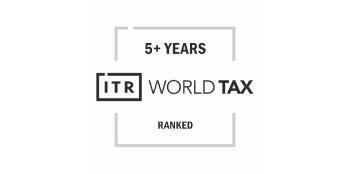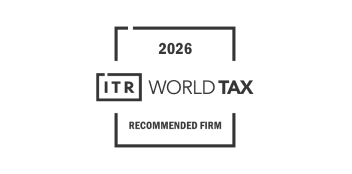


On July 21, 2025, the new general regulations on financial matters applicable to the Retirement Savings Systems (the “Regulations”) were published, issued by the Ministry of Finance and Public Credit and the National Commission of the Retirement Savings System (“CONSAR”) which repeal the “General Regulations on Financial Matters for Retirement Savings Systems” published in the Federal Official Gazette on September 18, 2019, along with their amendments and additions. These Regulations establish the regulatory framework for the management, investment, and administration of the investment portfolios of the Specialized Retirement Fund Investment Companies (“SIEFORE”), Retirement Fund Administrators (“AFORE”), simplified issuers, credit institutions, and other participating financial entities. The Regulations became effective as of July 22, 2025[1].
[1] The Regulations became effective, in general, on July 22, 2025; however, the Regulations establish certain special rules and differentiated timelines for the implementation of some chapters, obligations, and exhibits. For more information regarding these exceptions, please contact any member of our Corporate Finance and Banking team.
The Regulations introduce Simplified Issuances as a new category of assets in which SIEFORE may invest. These issuances are classified into four main types, each with specific rules and limits for acquisition and monitoring, as well as control and reporting obligations for the internal committees of the AFOREs.
a) Simplified Level I Debt Issuances: Refers to securities issued by Level I Simplified Issuers. SIEFOREs may only invest in Level I Debt through vehicles that meet the standards set by the Risk Analysis Committee.
b) Simplified Level II Debt Issuances: Refers to securities issued by Level II Simplified Issuers. SIEFOREs may invest in Level II Debt directly or through vehicles that meet the standards set by the Risk Analysis Committee.
c) Simplified Equity Issuances: Refers to securities issued by Simplified Equity Issuers. SIEFOREs may invest in Equity directly or through vehicles that meet the standards set by the Risk Analysis Committee.
d) Simplified Securitized Instruments Issuances: Refers to asset-backed securities issued by Simplified Issuers. SIEFOREs may invest in asset-backed securities directly or through vehicles that meet the standards set by the Risk Analysis Committee.
The Regulations require each SIEFORE’s Financial Risk Committee to (i) define the maximum threshold for participation in Simplified Issuances relative to the SIEFORE’s total assets; (ii) establish issuer and issuance specific concentration limits; and (iii) issue criteria and metrics for risk diversification and monitoring, including periodic reviews of such limits and metrics, adjusting them according to market conditions and observed performance. The Integrated Risk Management Unit (“UAIR”) must periodically report on compliance with these criteria and deliver specific evaluations for Level II Debt issuances.
Level I and Level II Simplified Debt Issuances are exempt from additional credit assessments if thresholds and limits are met.
The Regulations provide that investments in SME Issuances (Emisiones Pymes) made prior to the amendment may be maintained under their original terms.
For more information regarding Simplified Issuances, please see the article published by our Firm here.
[2] As a result of the amendment that repealed the “General Regulations on Financial Matters for Retirement Savings Systems” published in the Official Gazette on September 18, 2019, the term “SME Issuances” was eliminated. This concept had previously been defined as follows in said provisions: “SME Issuances, refers to securities issued by duly incorporated legal entities that meet the characteristics established in section III of article 3 of the Law for the Development of the Competitiveness of Micro, Small, and Medium Companies and in the corresponding Agreement establishing the stratification of small and medium companies, issued by the Ministry of Economy, and that do not have an Asset Link with any Business Group that does not meet the characteristics set forth in the aforementioned stratification. SME Issuances shall be classified as:
a) SME Debt Issuances, referring to Debt Instruments of national issuers under the Authorized Investment Regime whose issuance does not exceed the equivalent of seventy million Investment Units (UDI) individually, and
b) SME Equity Issuances, referring to Equity Instruments under the Authorized Investment Regime, preferably initial public offerings and medium and low capitalization shares;”.
The Regulations strengthen the attributions of the Investment Committees by imposing a phased process of approval and monitoring of Structured Instruments:
To enhance decision-making and oversight of investments in Structured Instruments, the Regulations provide for the creation of a specialized subcommittee and the implementation of an institutional channel for the receipt and evaluation of investment proposals. This approach aims to professionalize and increase transparency in the analysis, selection, and monitoring process of these instruments, as well as to ensure that exit or divestment strategies are assessed comprehensively and with due consideration for the interests of workers.
All proposals received in the Channel must be recorded and documented with periodic reports on their status, and the Investment Committee must document the follow-up of each proposal, including the justifications for its acceptance or rejection.
Impact of Structured Instrument Requirements on Underlying Assets:
1. Manager Co-Investment Requirement.
2. Regulatory Impact of Underlying Assets. Although underlying projects or assets are not directly subject to the 2% co-investment requirement, they must still be taken into account for compliance with applicable regulatory limits, such as:
3. Practical Implications. To ensure compliance and sound risk management, the AFORE must:
Key requirements apply at the instrument level, but regulatory effects extend to underlying assets. The AFOREs must assess total exposure, both direct and indirect, in their internal monitoring and compliance models, even if co-investment is not required for each subproject.
Likewise, a new Chapter V is incorporated into Exhibit B of the Regulations, which details the requirements that Structured Instruments “with preponderant investments in Mexico” must meet to be considered within the limits of the Investment Regime of Exhibit S bis of the general provisions that establish the investment regime to which SIEFORES must be subject.
For this purpose, instruments with preponderant investments in national territory will be understood as those that:
The AFOREs must clearly identify these instruments, and CONSAR will annually verify compliance with this obligation with a cut-off date of December, during the month of April of the following year. If the AFORE does not comply with the identification obligation, the investment will be subject to the limits of the aforementioned Exhibit S.
Risk management is one of the core pillars of the Regulations, which introduce more robust methodologies for the identification, measurement, and control of financial, operational, and concentration risks. A clear segregation of duties is required among the critical areas of the investment process, along with the implementation of automated systems that ensure the traceability and security of operations.
The applicable corporate governance framework is strengthened through a series of measures, including:
The Regulations establish the concept of restructuring of assets subject to investment as any significant modification in its terms and conditions of the assets subject to investment, such as changes in the capital structure, shareholder composition or legal nature.
To monitor those Assets Subject to Investment subject to restructuring, the head of the risk area must notify the CONSAR, the Financial Risk Committee and the Investment Committee on the business day following the restructuring process is made public; and the Investment Committee must evaluate and pronounce on the terms and conditions of the restructuring, establishing guidelines for its monitoring and ensuring alignment with the fiduciary duty towards the workers.
In addition, the Investment Committee will have to implement mechanisms to monitor financial performance on a regular basis to assess whether the restructurings are still beneficial to workers.
The implementation of the Regulations will be gradual, taking into account, among other aspects, the following:
[3] XLIX quáter. Taxonomy, the tool issued by one of the authorities of Eligible Countries for Investments or nationally or internationally recognized classification systems, which allows the identification and classification of economic activities, assets or investment projects with positive sustainable impacts, based on established goals and criteria, through a specific methodology.
This document is for informational purposes. It does not constitute any opinion and may not be used or cited without our prior written authorization. We do not assume any responsibility for the content, scope, or use of the document. For any information regarding this note, please contact any partner of our Corporate Finance and Banking team.
Awards














